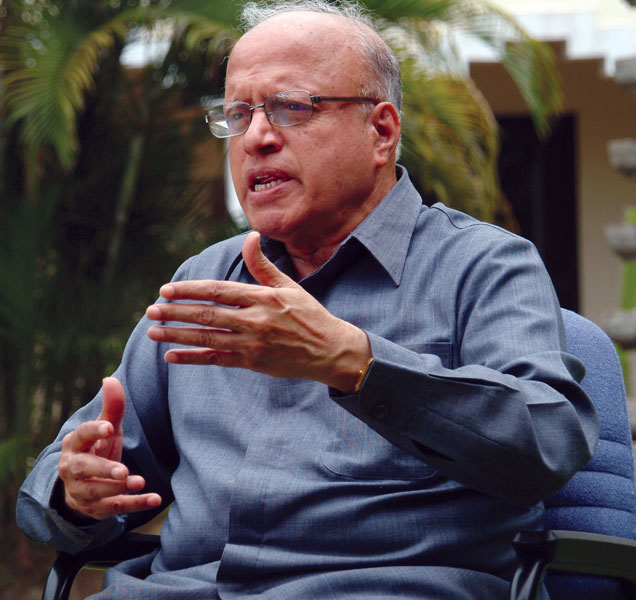The National Commission of Farmers (NCF) had proposed the following steps to strengthen the economic viability of farming.

First, credit must be available at an interest rate of four percent both to men and women farmers. At the moment, women farmers do not get credit including Kisan Credit Cards largely because they do not have title to the land. This sad situation prevails even in the farmer suicide-prone areas of Vidarbha.
Second, we should improve the post-harvest infrastructure for crop plants as has been done in the case of the dairy sector. Post-harvest storage and value-addition have not received the attention they deserve.
Third, we should promote an Indian Single Market, thereby helping to remove all inter-state barriers in the movement of grains and other farm products.
The profitability of agriculture can be improved only if farmer families have opportunities to earn both farm and non-farm income.
Finally, assured and remunerative marketing is the key to stimulating and sustaining higher production. For this purpose, NCF had recommended that the minimum support price should be C2 (i.e. total cost of production) plus fifty per cent. Unless, prices are attractive, the younger generation will not remain in farming. NCF recommended an attractive price only because most of our farmers have small holdings and have very limited marketable surplus.
Provide income orientation
The National Policy for Farmers recommended by the NCF and placed in Parliament in November 2007, has proposed an income orientation to farming not only through remunerative pricing, but also through value addition to every part of the plant and animal biomass.
For example, we are setting up a Rice Bio Park at Nay Pyi Taw (the new capital of Myanmar) which will help to produce and market value-added products from the rice straw, bran, husk and grain. The profitability of agriculture can be improved only if farmer families have opportunities to earn both farm and non-farm income. This is where biomass utilisation becomes important.
The NCF has also made detailed recommendations on methods of attracting and retaining youth in farming. Essentially, unless farming becomes economically attractive and intellectually stimulating, the younger educated persons in the farmer family will not prefer agriculture as their profession. We have to take steps to technologically upgrade farm operations through agricultural mechanisation, biotechnology and information technology. Modern information technology provides fantastic opportunities for communicating to farmers, vital information on weather and market conditions at the right time and place.
Unless farming becomes economi- cally attractive and intellectually stimulating, the young and educated in farmer families will not opt for this profession.
The National Policy for Farmers, placed in Parliament in November 2007, includes the following goal — “to introduce measures which can help to attract and retain youth in farming and processing of farm products for higher value addition, by making farming economically attractive.”
Little demographic dividend
At present, we are deriving very little demographic dividend in agriculture. On the other hand, the pressure of population on land is increasing and the average size of a farm holding is going down to below one hectare. Farmers are getting indebted and the temptation to sell prime farmland for non-farm purposes is growing.
Over 45 per cent of farmers interviewed by the National Sample Survey Organisation wanted to quit farming. Under these conditions, how are we going to persuade educated youth, including farm graduates, to stay in villages and take to agriculture as a profession? How can youth earn a decent living in villages and help shape the future of our agriculture?

This will require a three-pronged strategy.
- Improve the productivity and profitability of small holdings through appropriate land use policies, technologies and market linkages; develop for this purpose a ‘4C approach’ — that is, Conservation, Cultivation, Consumption and Commerce.
- Enlarge the scope for the growth of agro-processing, agro-industries and agri-business and establish a ‘Farm to Home’ chain in production, processing and marketing.
- Promote opportunities for the services sector to expand in a manner that will trigger the technological and economic upgradation of farm operations.
Water and market security
Water security and market security are two essential needs for farmer families. In the coming decades, lack of adequate water for irrigation is going to be a major production constraint. In this connection, the contribution of Rotary in building check dams in the arid areas of Rajasthan such as the Alwar and Sikar districts is an initiative worthy of replication.
In my view, we should make rainwater harvesting mandatory both in rural and urban areas. The experience of Chennai in mandatory urban rainwater harvesting is a good model. Our Prime Minister has also been emphasising the need for greater attention to improving water use efficiency through a More Crop per Drop approach. I really believe Indian Rotarians can play a significant role in this respect.
It is commendable that even the Rain Centre in Chennai, which provides information on all aspects of rainwater harvesting and management, has been set up by a Rotarian.
Indian agriculture is at the crossroads. On the one hand, we have uncommon opportunities to improve the productivity, profitability and sustainability of small scale farming through synergy between technology and public policy. On the other hand, our farmers face many difficulties arising from the cost, risk and return structure of farming. Market behaviour and import policies further compound their problems. If agriculture goes wrong, nothing else will have an opportunity to go right in our country.
The year 2014 marked the transition from a ship-to-mouth existence to a right to food from home-grown food commitment. If our farmers and farming continue to experience neglect, we may have to revert to PL480 days.
The writer is a renowned agriculture scientist and Founder Chairman of M S Swaminathan Research Foundation.





